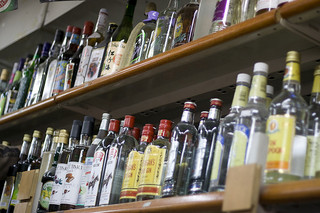
We just finished reviewing a recap report internally that will go to our agency client, and then the brand team, in the next couple of days. We really dug into the data provided by field staff and found some interesting stories. However, the stories weren’t all readily apparent at first. We had to dig.
How field staff data informs the brand team
The first part of our discussion was to ground what we are doing with field staff reported data.
It’s easy to get stuck in this routine of showing total samples, total impressions, total interactions. Maybe you break them out by venue type or by market. This is what everyone does. And that’s fine. It’s table stakes even. It’s something your brand Client will expect in every report.
But why? What is it that the brand team is trying to learn? I argue that, at the end of the day, when the brand team is looking at your numbers and charts they are really looking for three things:
- Are there situations where the samples distributed were higher and, therefore, may reveal best practices for greater sampling efficiency?
- What was the volume of hand-sales and did that volume justify the program?
- Is there something to be learned from how samples and hand-sales trended that can be used to influence future event programming and thus maximize value?
The thing is, each of these questions can easily be answered with the most routine field staff data. We do this every day for our clients. Let me give you an overview of how.
Diving into the field staff data to find the story
The first thing you have to do to get your head around sample distribution is to standardize it.
You need to look, not at the overall sum, but at the average per event. You’ll find that different event types perform differently.
Take the adult beverage world for example. A tailgating activation will have greater sampling opportunity than, say, a liquor store. There are simply more people.
You’ll also find that your markets vary in the volume of samples distributed per hour. When you identify the areas where there is significant difference, you can focus on just those areas to deconstruct the activation further to better understand why.
It’s in these “whys” that best practices emerge. This is where you’ll find the recipe for improving sampling efficacy.
Understanding conversion of samples to sales
While the liquor store will have fewer samples per hour, it will, nonetheless, generate a much higher number of onsite purchases.
If you’re seeing interaction-to-sales conversion rates of 25% off-premise, then you might be right about average-to-high average.
If you’re around 40% or better, you’re in the top performer’s range (but not doing something others haven’t done before). The conversion rate is key. It standardizes the data and, therefore, allows you to tell the real story.
And, the story is what it’s all about. When you use the data on hand, some simple principles of data segmentation, and deductive reasoning, you can uncover the real value in your program activation.
We finished the internal discussion today about the recap at hand with real excitement. It’s thrilling to see the story emerge.
Our agency client is a team of smart marketers. They work hard to deliver programs that consistently out-perform alternative options.
When we find the data that proves this, it’s an opportunity to help them shine. That’s what we like doing. It’s a lot of fun.
Photo Source: https://www.flickr.com/photos/jmrosenfeld/
